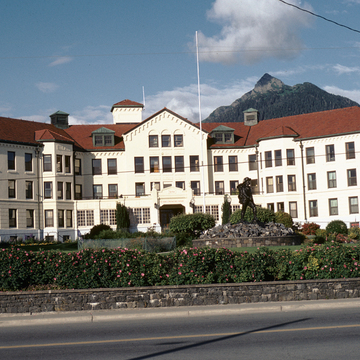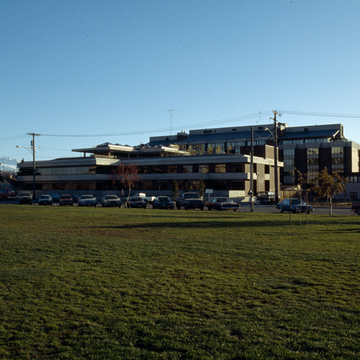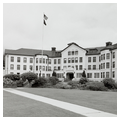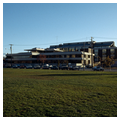Pioneers' Homes, state-supported old-age homes for men, were first legislated in 1913. After using abandoned military buildings in Sitka, the Pioneers' Home began construction
Of concrete construction, the main three-story building is in an open U-plan. The stucco walls, painted yellow, contrast with the red-tile hip roof. A corbeled cornice and various projections, including a sun porch across the front, give the building a slightly ungainly appearance, but as the largest building in Sitka, located on a spacious lot across from a park on the water, it is undeniably prominent. Auxiliary structures, such as the manager's house and nurses' quarters, were built in 1935 in a compatible style; a 1956 addition in the rear was constructed to accommodate women. The statue The Prospector, sculpted by Alonzo Victor Lewis in 1949, stands in front of the building.






